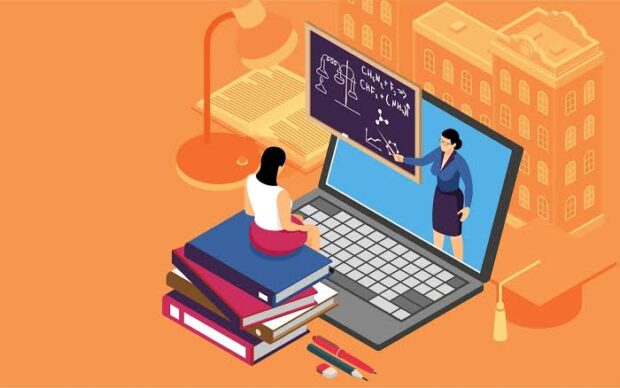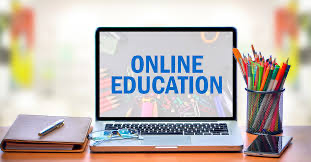Education via the Internet Online education is the provision of educational content with what it includes of exercises, follow-up in a comprehensive or partial manner, and interaction remotely or in the classroom by using advanced programs stored in the computer, as it is defined as the use of modern communication mechanisms from a computer, and its multimedia From images, files, and sound, in addition to its networks, search mechanisms, and electronic libraries, whether remotely or in class, with minimal effort, time, and more usefulness, and in this article we will introduce you to it. 0 seconds of 0 seconds Types of e-learning Synchronous e-learning Synchronous e-learning is education on the air, which requires the presence of learners at the same time in front of computers, to conduct conversation and discussion between students and the teacher through chat rooms, as it is known as receiving lessons during virtual classes, Or by using its other tools, and among its drawbacks is the need for a new communication network, and for many modern devices, and in spite of them, it is characterized by many positives, namely: reducing cost, saving time and effort as a result of dispensing with going to the study site, and the learner obtaining feedback and immediate. Asynchronous e-learning Asynchronous e-learning is indirect education, which does not require the presence of learners at the same time, such as: obtaining experiences from CDs, or from available sites, or through e-learning tools, such as e-mail, where this type is distinguished It has many advantages, namely: the learner’s access to study at any time he finds appropriate for him, and the ability to return to the subject and re-study it again, and despite its advantages, it has some disadvantages, namely: increased isolation, and the learner’s inability to obtain immediate feedback from the teacher. E-learning tools Synchronous e-learning tools Synchronous e-learning tools are the tools that provide the opportunity for the user to communicate directly with other users on the network, and among these tools: Conversation: It is the ability to talk with other users over the Internet at the same time by using a program that forms a virtual station that collects all Users from all over the world on the Internet to speak, write and voice. Audio conferencing: It is an electronic technology based on the Internet, as it uses a regular telephone, and a conversational mechanism in the form of telephone lines that connect the speaker to a number of receivers in different parts of the world. Video conferencing: These are conferences that allow communication between a group of individuals who are separated by a distance through a high-capacity television network using the Internet, where everyone present can ask questions and conduct any discussion with the speaker, and he can, with a specific terminal, see the speaker . Whiteboard: It is a whiteboard similar to the traditional blackboard, where the user can make drawings and explanations that are transmitted to others. Satellite programs: These are the programs related to computer systems, which are linked directly to the communications network, which facilitated the possibility of benefiting from visual and audio channels in the teaching and learning processes. Asynchronous e-learning tools Asynchronous e-learning tools are tools that allow the user to communicate with other users indirectly, as they do not require the presence of the user and other users on the network at the same time. computer through the Internet. Web: It is an information system that displays various information on interconnected pages, and allows the user to access various Internet services. Mailing lists: It is a list of postal addresses added to the organization or person, to which messages are transferred from one postal address. File Transfer: The function of this tool is to transfer files from one computer to another computer connected to it via the Internet. Interactive video: It is the technology that provides interaction between the learner and the presented material, with the aim of making education more interactive. CDs: They are the discs through which the curricula are prepared, loaded on students’ computers, and then referred to when needed. Objectives of e-learning Establishing a base and infrastructure of information technology. Developing a positive attitude towards information technology by using the network from local communities and parents. Solve realistic life situations within the school environment, and get rid of problems. Increasing the independence of young people and their self-reliance in the search for knowledge and information. Providing the new generation with many and good future options. Provide students with many tools in the field of informatics, to help them express themselves. Granting society strategic capabilities for technological and economic competition.
Education via the Internet is the provision of educational content with what it includes of exercises, follow-up in a comprehensive or partial manner, and interaction remotely or in the classroom by using advanced programs stored in the computer, as it is defined as the use of modern communication mechanisms from a computer, and its multimedia of images, And files, and sound, in addition to its networks, search mechanisms, and electronic libraries, whether remotely or in class, with less effort, time, and more usefulness, and in this article we will introduce you to it.


